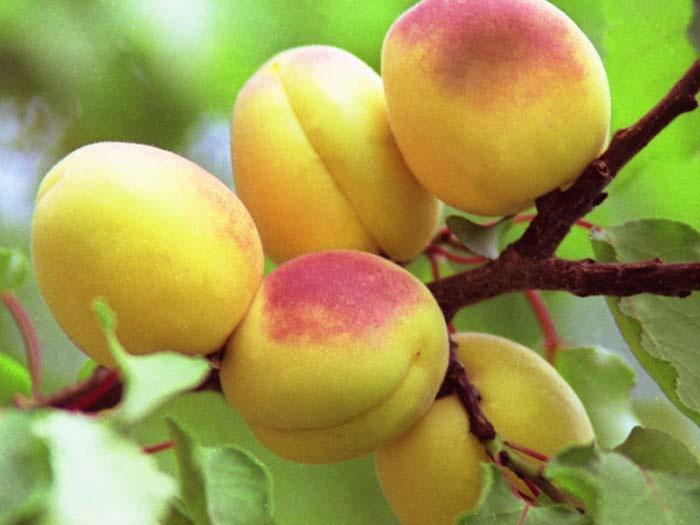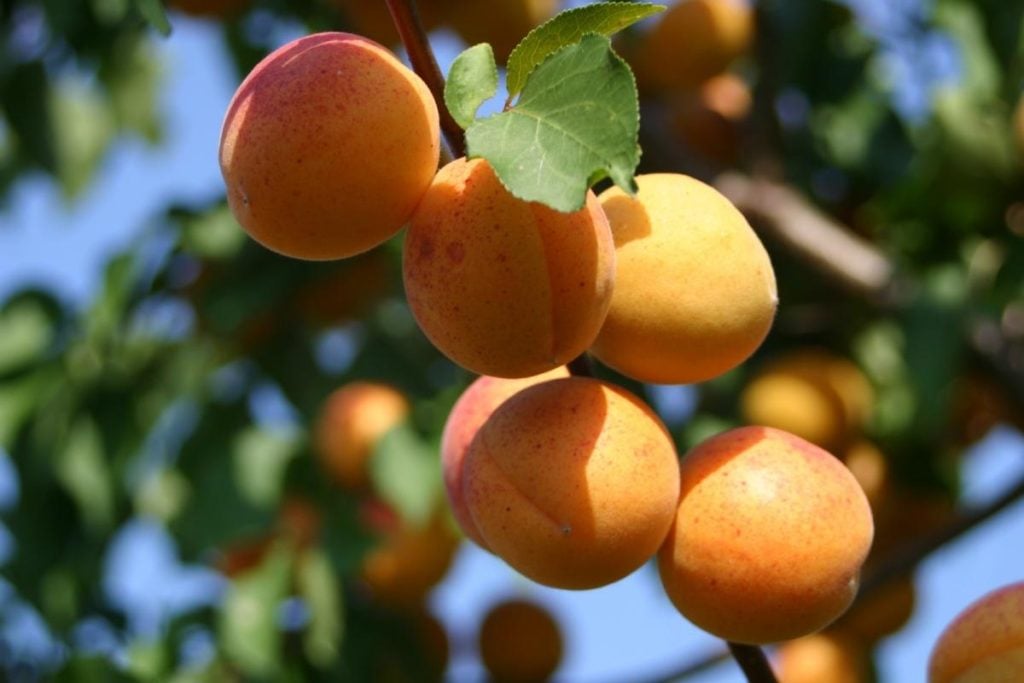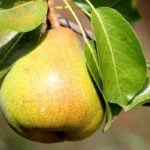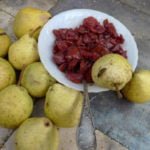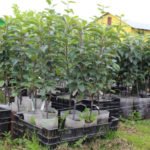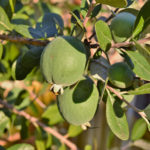It is believed that the apricot is from China, from where it traveled through Central Asia to Iran, then to Armenia. And already from Armenia about 2000 years ago, apricots came to Ancient Greece, where they were called “Armenian apple” (Malum Armeniacum), and then came to Ancient Rome under the name “Armenian plum” (Prunus Armeniaca).
Planting Apricot Trees
Apricot belongs to the family of Rosaceae, is a sprawling tree with a strong trunk. This is a southern plant, for its planting, you should choose the warmest, lightest and highest place in the garden possible.
It is necessary to put up with the awakening of the kidneys at the end of April. Between the trees about 5 m (5.5 yards). The landing pit is prepared in the fall and has a size of 70x70x70 cm (2.3×2.3×2.3 foots). When planting, keep in mind that the diameter of the root system is 2 times the diameter of the crown.
The soil for the apricot should not be dense, it must be prepared. At the bottom of the pit should be put drainage-crushed stone, gravel. Then add a soil mixture consisting of the top layer of soil with organic (humus) and mineral fertilizers, wood ash (lime) and ammonium nitrate. It is better to add lime in advance, so as not to burn the roots. Mix the fertilizers well, sprinkle a little with earth so that their roots do not touch directly.
The landing pit was filled up to ground level, so after planting the apricot was on the mound. If there is ground water on the site, then the height should be increased. The roots of the apricot were sprinkled to the level of the collar, so that it would not burrow. The diameter of the hill is made by a watering circle. After planting, you need to water the apricot seedling with 2 buckets of water. But do not wash away the mound and do not expose the root system. There is an option to plant apricot trees horizontally, bending the young seedling to the ground, and fix the branches at an angle of 40 degrees. Thanks to this, the seedling receives a lot of heat from the ground.

Reproduction
Seeds
Grown from the seeds of native plants, the apricot will be much more resistant to the climate, and the properties of the varieties in the case of apricots are usually inherited. Therefore, the stone is a good way to grow apricots.
The seeds are washed and planted immediately in the summer or stored until autumn in wet sand in the basement and planted no later than the beginning of October. But do not forget that you need to keep the bed moist before planting seeds.
The third option is to plant the seeds in the spring.
To do this, in early March, the seeds stored at room temperature should be soaked for 5 days in cold water, constantly updating it, and then put in a package of wet substrate (sawdust, moss, sand), 1 part of the seeds on 3 parts of the substrate. The mixture is kept at a temperature of +4 to +12 °C (39-54 °F), holes are made in the package for air access. Stratification lasts from 40 to 100 days, depending on the apricot variety. That the seeds are ready for planting, you will know by seeing that the seeds have cracked and sprouted. But if this happens too soon, then it is necessary to transfer the seeds to an even colder place 0 to +2 °C (32-36 °F).
Seeds are planted in early May in the soil with previously introduced organic and mineral fertilizers. A furrow is made in the prepared comb, it is well spilled with water and seeds are planted to a depth of about 7 cm (2.7 inch). The distance between the seeds should be at least 10 cm (4 inch), between the rows – 50 cm (1.6 foot). After planting, the bed is mulched with compost, rotted sawdust or peat chips. Apricot is fast-growing, in the summer the seedling will grow up to 100 cm (3.3 foot). In the following winter, you can transplant the seedling to a permanent place or use it as a rootstock by grafting. After 3-4 years, the trees will begin to yield.
Grafting
1-2-year-old seedlings are rhizomes that can be grafted with cuttings of a fruiting apricot. For mating (a combination of the trunk of the seedling, cut at a height of 3-7 cm (1.2-2.8 inch) from the ground, and pruning), the trunk should not be thinner than 0.8 cm (0.3 inch), usually grafting is done in April-May, during the sap movement period.
Another option is to graft the “bark” into separate skeletal branches at a later age. This will speed up the time of fruiting of plants, allow you to pollinate different plants on the same tree.
Care for Apricot Trees
Despite the drought, watering is necessary for the proper development of apricot fruits. You should feed the apricot when it blooms and with the appearance of fruits.
If the fruit is too much, it is harmful to the young, brittle branches of the apricot, so to improve the quality of the fruit, the ovary is thinned, do this after the excess ovary has fallen off. To draw a clearer picture of how many ovaries you will have to leave, use the fruit-to-leaf ratio, which is usually 1 in 20.
Of the insect pests, aphids are the most troublesome for apricots. You can scare them off by planting nasturtiums around the tree.
Apricot Pruning
After planting, it is necessary to cut off the branches and trunk. The most suitable scheme for the apricot crown is sparse — tiered (5-6 of the skeletal branches). Avoid the growth of branches from one place of the trunk, put the branches at a large angle to the trunk.
Apricot fruits develop on the shoots of annuals, the greatest yield is formed on the extensions of the shoots. In the spring, the fruit-bearing branches should be shortened in half to allow the flower buds to develop on the remaining part.
It is also necessary to thin out the crown for better cross-lighting. Rejuvenating pruning is carried out in the summer after harvest. But mature trees do not like excessive pruning.
Apricot Harvest
For drying and eating, the fruit is harvested when the apricot is fully ripe. For transportation — when the green color changes to light yellow. For canning, fruits with dense flesh, not overripe, are selected.
The collection should be carried out in dry weather, after the dew has fallen. When harvesting in cold or hot weather, the quality of the fruit is disturbed.
Apricot Tree Varieties
Hardy
It ripens in early August and has medium-sized fruits, weighing about 40 g (1.4 oz). The fruits are golden-orange, oval, “ruddy”. It begins to bear fruit in 5-6 years after planting. Trees of this variety grow quickly and bear fruit well (up to 80 kg (176 lb) per tree). Refers to self-fertilizing varieties.
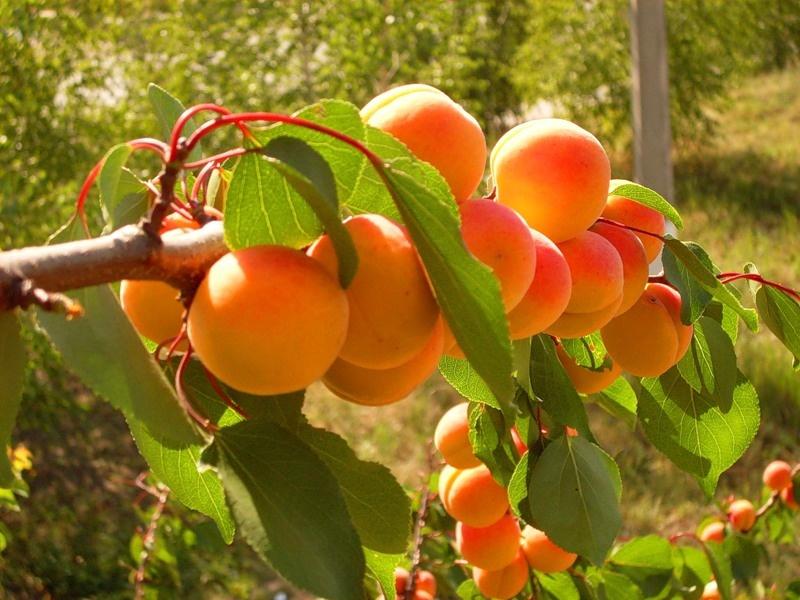
Son of Ruddy
This was obtained by crossing the red-cheeked and Golden summer varieties. A strong or medium-sized tree. The fruits are oval or rounded, slightly flattened, juicy, weighing from 40 to 60 g (1.4-1.6 oz). The fruit color is orange with red-orange patches. The flowering time is average or later.
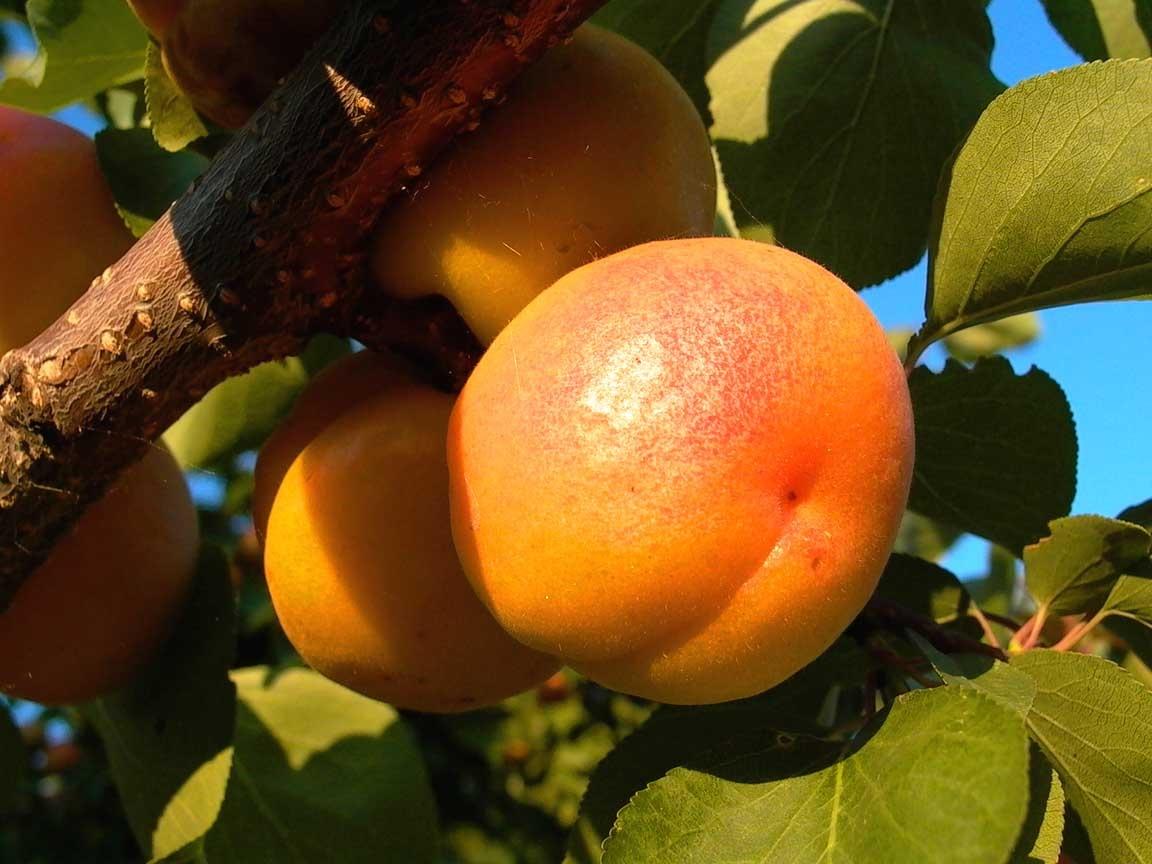
Orlovchanin
This was obtained as a result of selection from seedlings of open pollination of the Triumph of the North variety. The tree is medium-sized, the fruits are collected on annual shoots inside the crown. The shape of the fruit is round-ovoid, yellow with red inserts. They begin to bear fruit in the third year of life. Average yield and flowering.
